The Future of Surveillance: How U-Security, AWS and Liberty Global Are Redefining Security Systems
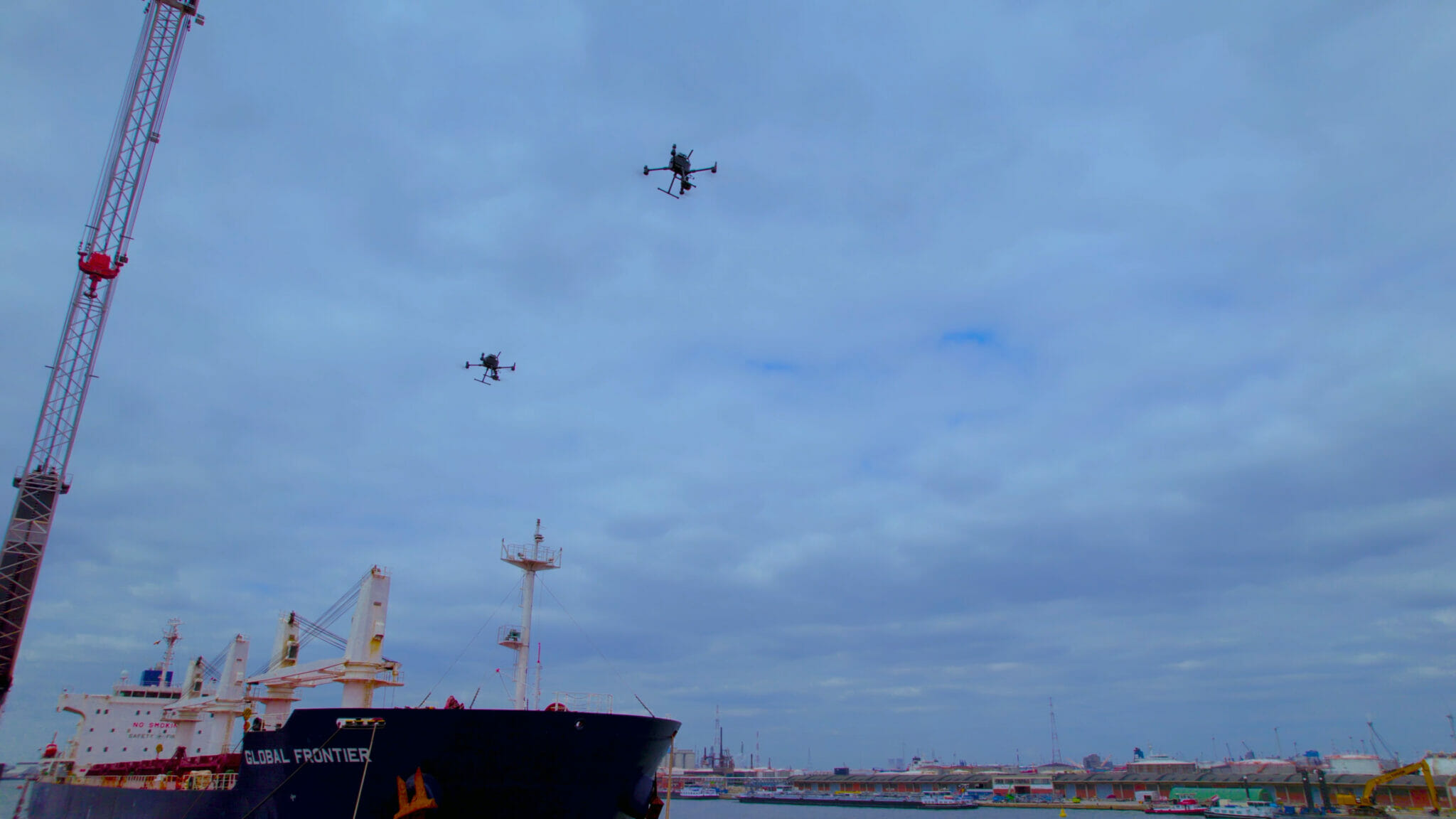
Why are drones so relevant, and what kind of use cases can they enable?
Drones are gaining relevance in commercial settings like surveillance and inspection due to their many benefits such as cost-effectiveness, flexibility, and accessibility. They can access challenging or dangerous areas, cover large territories quickly, and provide real-time data and analysis, leading to more efficient decision-making. Their remote capabilities, scalability, and integration with other technologies make them versatile tools across industries, making operations streamlined and cost-effective.
U-Security by Unmanned Life
U-Security is an autonomous drone-in-a-box application powered by the Unmanned Life platform, designed to connect and deploy autonomous drones for security surveillance and inspection of facilities. With cutting-edge features such as 5G connectivity, autonomous charging, thermal imaging, AI decision-making, and more, U-Security can deliver real-time, remote surveillance capabilities, deployed through a simple user interface.
U-Security enhances its security capabilities through a range of flexible mission deployment methods, including predefined schedules, on-demand activation, and automatic response to unexpected on-site anomalies detected by on-site sensors.
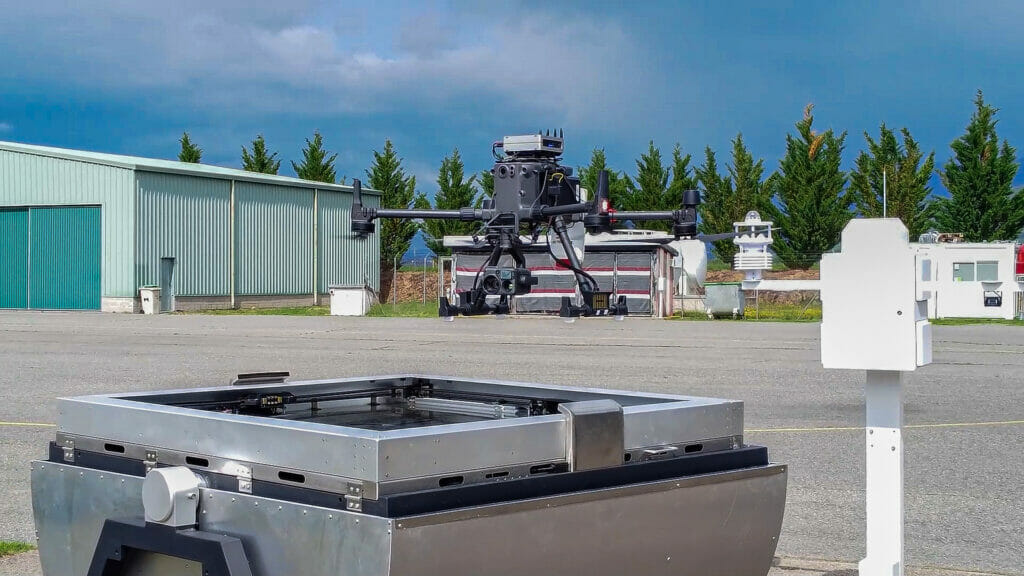
Adding value to U-Security through Network Connectivity
For BVLOS (Beyond Visual Line of Sight) drone operations, efficient communication is vital for sending and receiving various data types, such as streaming video, payload info, telemetry, commands, and mission data. While many commercial UAVs (Unmanned Aerial Vehicle) use RF (Radio Frequency), it has drawbacks, like requiring line of sight and being susceptible to interference from obstacles. Additionally, RF has limited bandwidth, making congested areas problematic.
By equipping drones with compact cellular modems, high-bandwidth data transfer for real-time video and low-latency communication for autonomous control become possible, even over long distances. This empowers remote autonomous flights with efficiency and reliability. For that reason Unmanned Life onboards cellular modems via a small companion computer (UL-Box) on the drones.
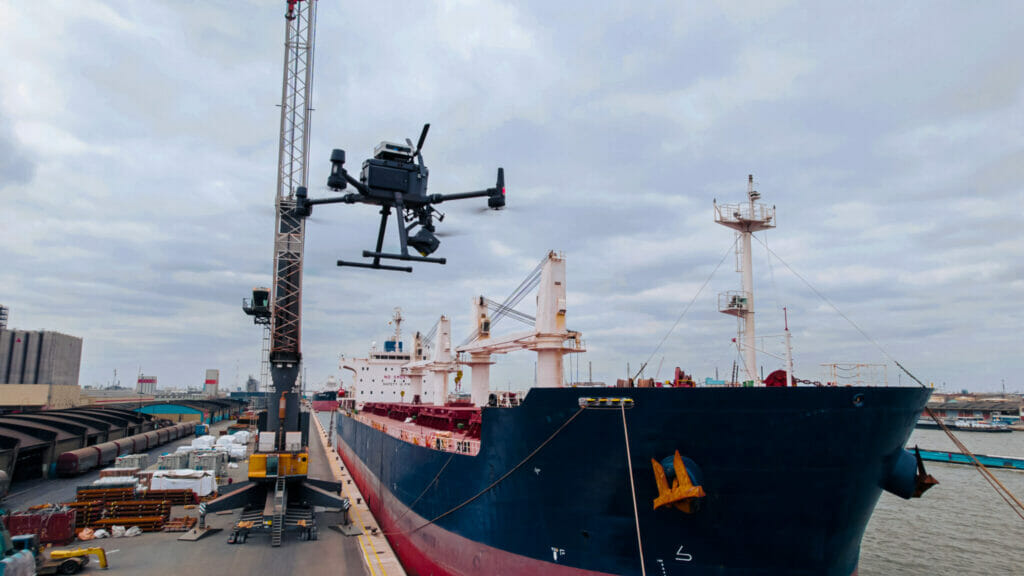
Adding Edge Computing to the mix
If you have an autonomous drone application, it makes sense to run analytics on top to automatically perform a use case. This could be intruders in the case of security, infrastructure damage in the case of inspections, or even digital twins in the case of mapping and monitoring. In the case of U-Security, we run a person detection algorithm for intrusion detection.
This creates the demand for computing power. However, embedding this computing capacity into the drones is impractical due to the potential weight increase, which would adversely affect the drone's battery life. Hence, an alternative approach is required to execute these analytics offboard the drones.
Edge computing provides the solution here. By relocating data processing to the network's edge or on-site for more confidential data models, analytics can be delivered to the interface in near real-time. The utilization of various edge models with AWS further augments the U-Security application's capabilities across diverse sectors. These are:
- AWS Wavelength: Provides scalability through rapid deployment in Wavelength zones, with the Application traffic contained in the mobile network.
- Outpost: Extends AWS compute, networking, security, and other services on premises for low latency, local data processing, and data residency needs. Especially useful in sensitive environments where application traffic should not leave the environment, as is often the case with the security of critical infrastructure!
- Snowball: Allows a ruggedised and secure edge computing device to localise compute in more challenging areas such as search and rescue environments, ports, and temporary sites.
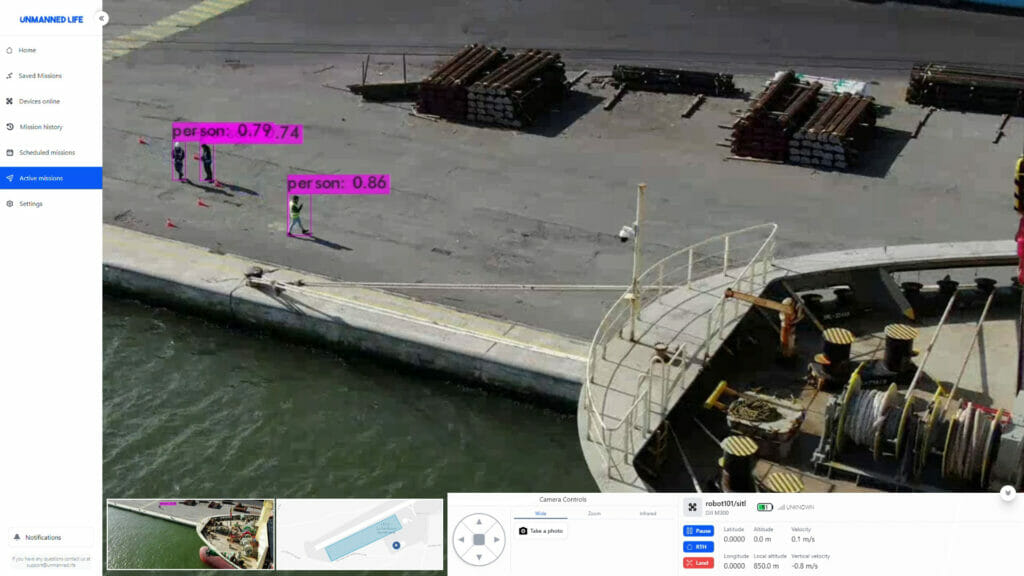
U-Security and AWS Snowball – A deployment in Antwerp
In Europe's second-largest port, Unmanned Life, AWS, and Telenet integrated these elements into a comprehensive enterprise-level application. The operational sequence was structured as follows:
- Drones were launched as a swarm to autonomously execute a mission throughout the port, benefiting from the low-latency command and control of 5G technology.
- Concurrently, real-time video was streamed directly over the 5G network, enabling direct viewing on the interface.
- The captured footage was subjected to real-time analysis for person detection using the AWS Snowball device. Subsequently, security breach alarms were triggered upon detection of any such individuals.
Deployment Architecture
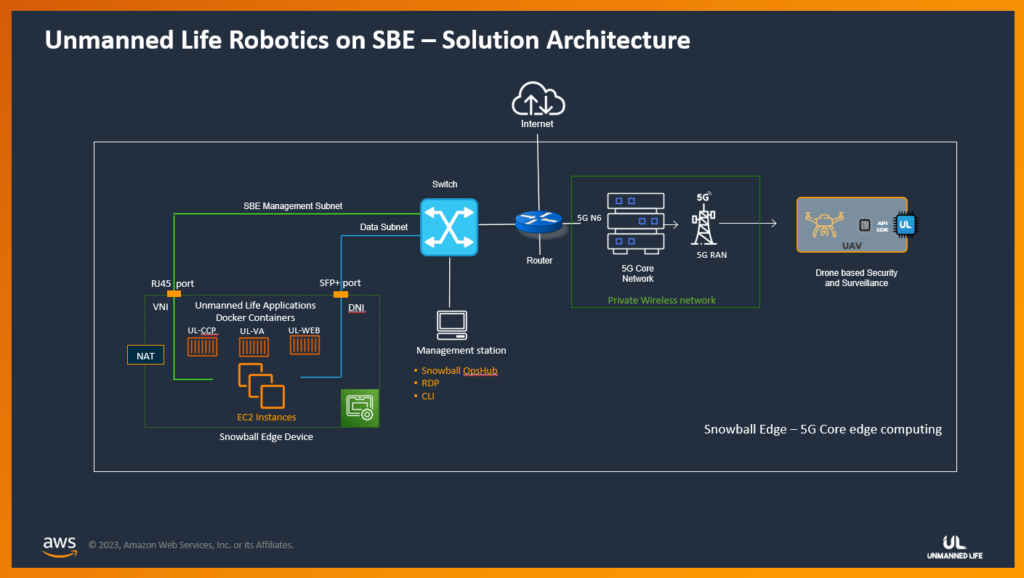
The successful integration of Unmanned Life, AWS, and Telenet technologies within the port not only demonstrates the current capabilities of the U-Security application over AWS infrastructure, but also holds significant promise for the future.
As technology continues to evolve, the seamless orchestration of autonomous drone swarms, real-time streaming, and advanced analytics has the potential to revolutionise not just port management, but also various industries worldwide. By leveraging the power of 5G, artificial intelligence, and edge computing, this innovative solution sets a precedent for scalable, intelligent systems that can adapt to the ever-changing demands of modern business and technology landscapes.



